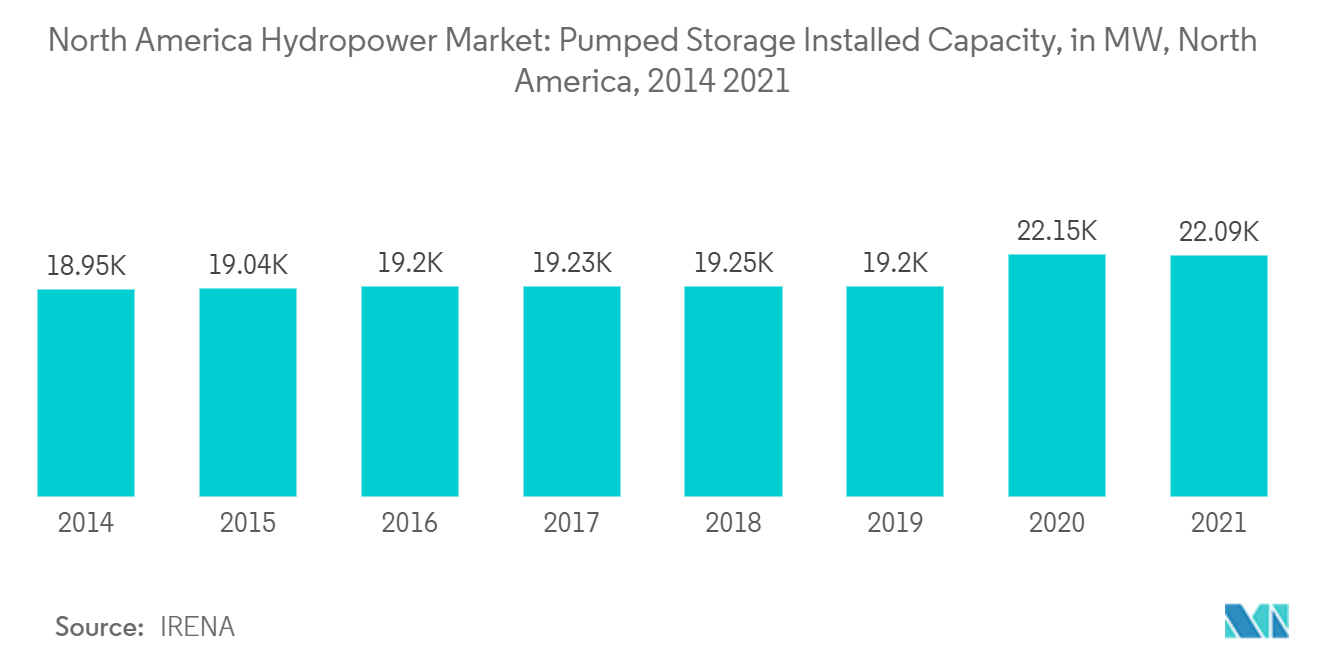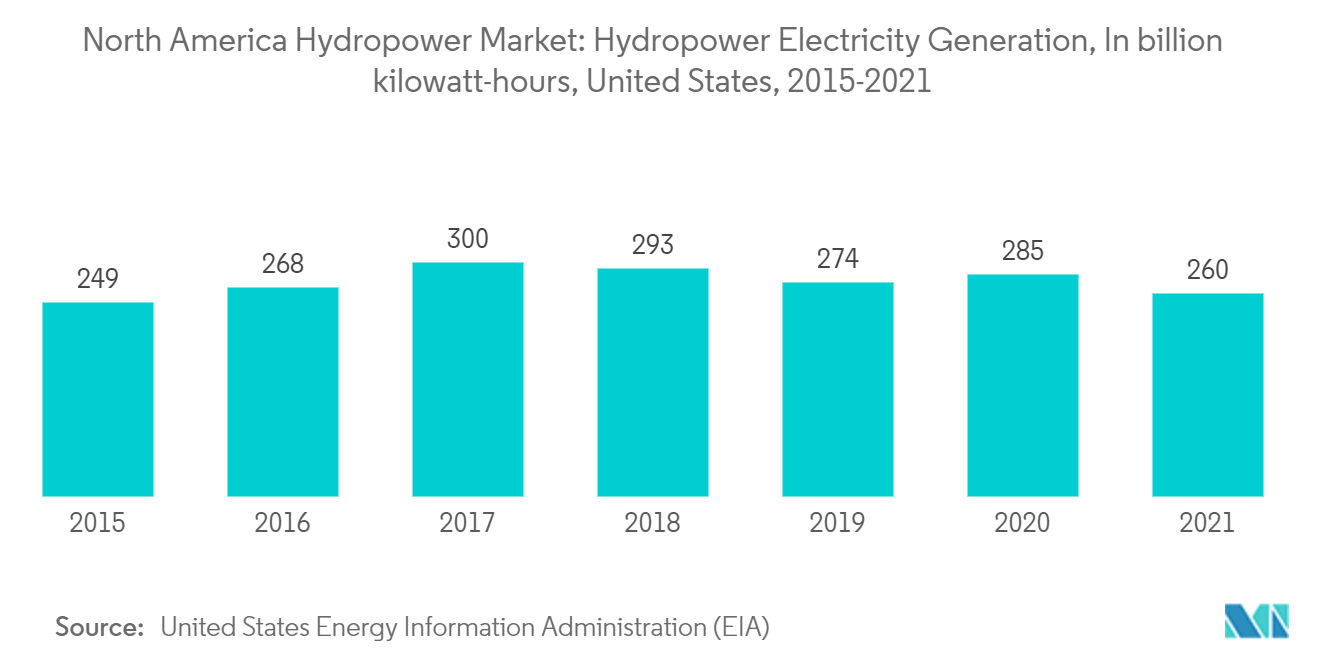Market Trends of North America Hydropower Industry
Pumped Storage to Witness Growth
- The region has vast rivers like the Mississippi and hilly regions like the Rocky Mountains that provide a large quantity of water and geographical topography, which can be used to provide hydropower in the region and aid the growth of the market.
- As the leading renewable energy sources like solar and wind are challenging to predict, it is helpful to use pumped hydro storage to provide 24-hour electricity to a region without using alternate, non-eco-friendly sources like thermal plants. This use is being utilized and exploited by countries in the region and is expected to aid the growth of the segment.
- In January 2023, rPlus Hydro LLP announced the submission of its application for a final license to the United States Federal Energy Regulatory Commission (FERC) for its 900 MW Seminoe pumped storage project located in Carbon County, Wyoming. New projects are being constructed in the region, which is expected to boost the growth of the market.
- In February 2023, OPG and Northland Power Inc. proposed a first-of-its-kind project for Canada to develop a pumped storage project at a long-inactive open-pit iron ore mine. The Marmora Pumped Storage Project is a joint venture between power producers. The proposed 400 MW closed-loop pumped storage facility in the Municipality of Marmora and Lake in Ontario could power up to 400,000 homes at peak demand with clean, renewable electricity for up to five hours.
- Pumped storage installed capacity increased in the North American region by 0.25% to 22,089 megawatts in 2021 from 19,253 megawatts in 2020. The installed capacity is expected to further increase in the forecast period due to further investments in the sector.
Hence, the pumped storage market is expected to witness growth in the forecast period due to rising investments in the field.

United States to Dominate the Market
- The country uses more hydropower than any other country in the area and uses a lot of modern water energy storage systems, such as pumped hydro.The government is pushing to increase the installed hydropower capacity of the country.
- The United States installed conventional hydropower capacity in 2021. The net installed capacity went up by 101.9 GW, which is an increase of 31.82% compared to the 79.7 GW that was installed in 2020.
- In 2021, hydroelectricity made up about 6.3% of all utility-scale electricity production and 31.5% of all utility-scale renewable electricity production. However, hydropower production in the United States dropped by 6.32 percent, from 285.27 billion kilowatt-hours in 2020 to 260.23 billion kilowatt-hours in 2021.
- According to the EIA, as of 2021, about 1,450 conventional and 40 pumped-storage hydropower plants operated in the United States. The Whiting plant in Whiting, Wisconsin, is the oldest hydropower facility still in use. It has been running since 1891. The Grand Coulee hydro dam on the Columbia River in Washington is the largest hydropower facility and electric power plant in the United States, with a total generation capacity of 6,765 MW.
- The United States Department of Energy says that hydroelectricity is the country's biggest source of electricity.The country has 50 GW of untapped hydropower potential, including 30 GW of pumped storage.
- Due to its large-scale investments, the US is likely to be the leader in the hydropower market in North America.


